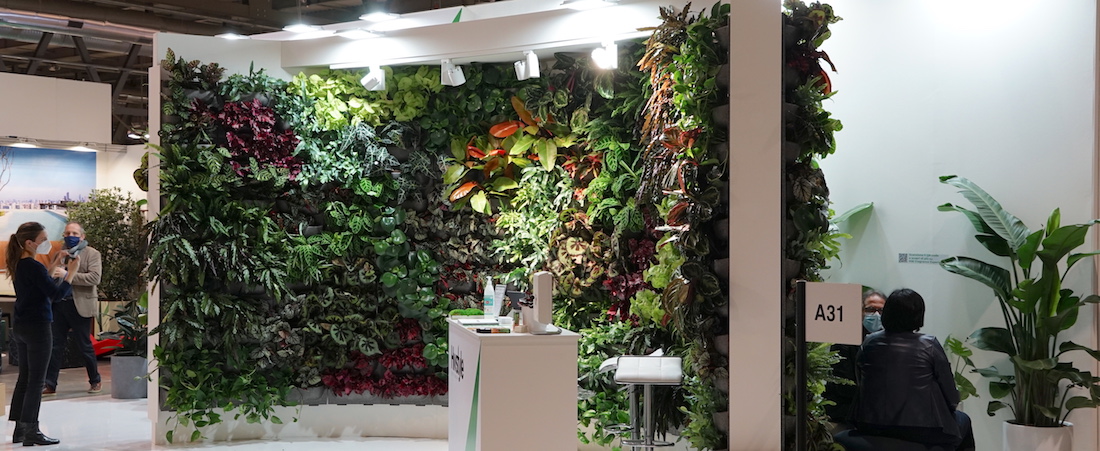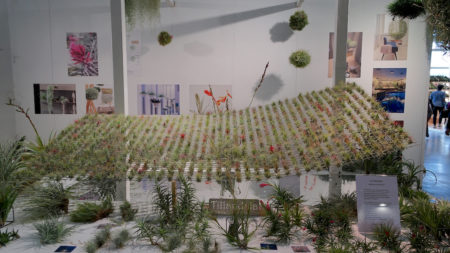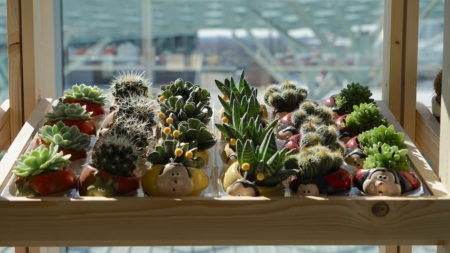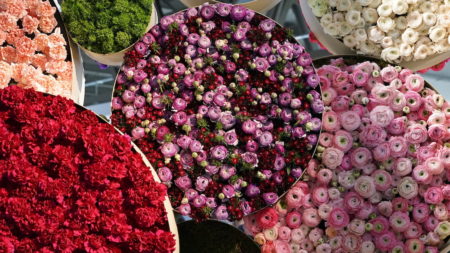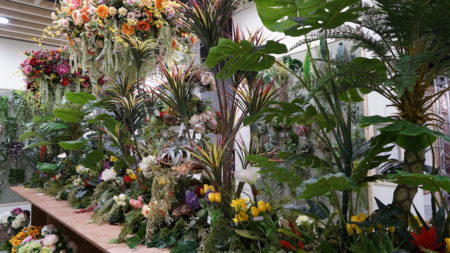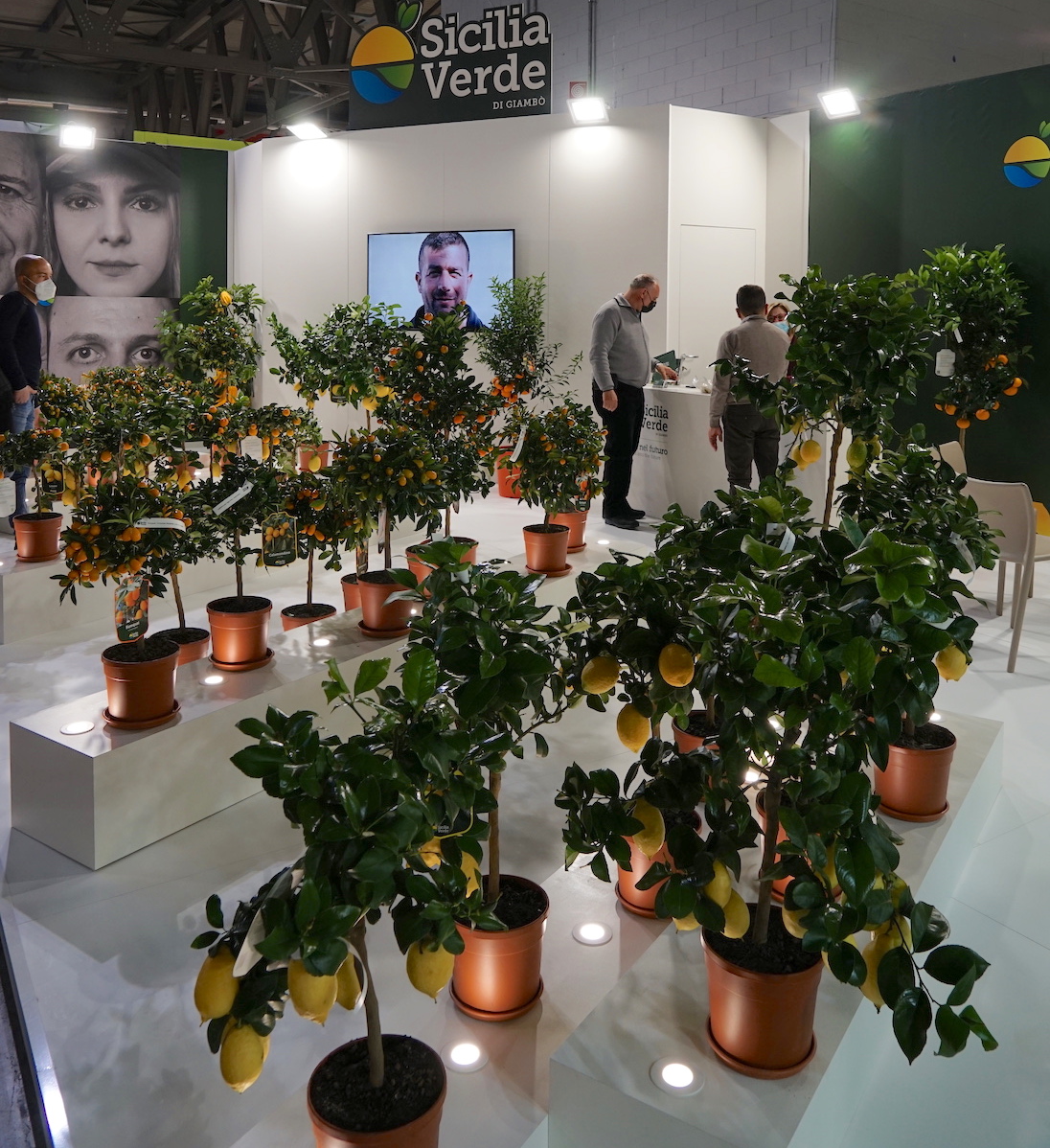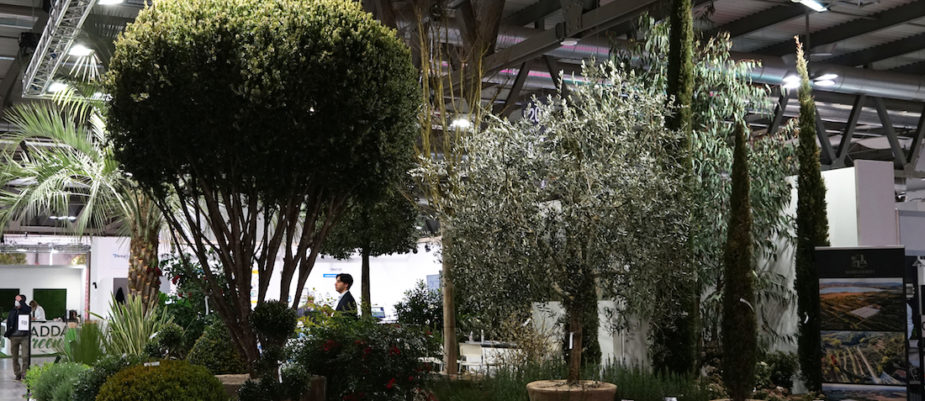
After her recent visit to the MyPlant fair, Biophilic Design Consultant Bettina Bolten proposes a thought on plants and their presence in our living and working environments.
Noting with surprise the wide range of artificial plants and flowers alongside live plants and flowers of all sizes and species, Bolten focuses in particular on this theme by analyzing the effect they have on humans.
Tackling the topic “live plants versus artificial plants” it is necessary to start from a more generic question: Why do we appreciate plants and flowers?
We like their aesthetic value and, on an intuitive level, we perceive their regenerative effect every time we enter an urban park, in a beautiful forest, but also when we see a green wall in an office. For some time now, plants have made their entry into the workplace and into the domestic settings that are the background to smart working.
Maybe we like plants because they make up about 85% of the biomass on our planet earth, compared to 0.3% between animals and humans, as biologist Stefano Mancuso often tells us?
One of the words that in recent times we hear more and more often referring to our bond with the natural world, is our innate Biophilia, “the passionate love for life and for all that is alive” (E. Fromm, 1964 ).
It is “the innate tendency to focus our attention on life forms and everything that reminds them and, in some circumstances, to become emotionally affiliated with them.” (E.O. Wilson, 2002). Biophilia means Love for Life and for Nature.
In this case, rather than Biophilia, perhaps it would be more correct Phytophilia, a term coined in 1989 by the Austrian ethologist Irenäus Eibl-Eibesfeldt (1928-2018), a pupil of Konrad Lorenz, to indicate our love for plants.
For at least 285,000 years our ancestors lived in close contact with wilderness. As arboreal primates, our human ancestors developed binocular vision, a prehensile hand, an upright posture, and the ability to carefully position one’s steps and grasp objects.
The savannah, with its reduced tree cover, made it necessary to move on grassy ground, facilitating an upright gait. This freed up the hands for carrying the tools.
“Our preference for plants and flowers has a deep motivation and is linked to the survival of our ancestors. Our ancestors could only thrive in regions rich in vegetation, which explains our phytophilia.
Numerous scientific researches and experiments have been able to demonstrate an important number of benefits related to the presence of plants on humans at a psychological and physiological level.
Today we often find artificial plants and flowers in commercial spaces, in the residential sector and in offices; well-made products and hardly distinguishable from the real ones, if not by touch. It is easy to understand their advantages.
The aesthetic and pragmatic role of artificial plants and flowers certainly has a positive impact on many people, as does the simple insertion of images with natural sceneries or plants and flowers into environments.
Personally, however, I prefer real plants and flowers in environments, because the fundamental traits of a biophile person can only be applied to Natura Viva and mainly concern the four concepts identified by Erich Fromm:
Care: Taking care of Nature is an active process. We help the one we love grow and try to protect it. This is costly in terms of time, effort and perseverance, but in return it offers us joy, a sense of effectiveness and makes us feel like an integral part of the world.
Responsibility: feeling responsible for Nature means actively engaging in understanding it and satisfying its needs.
Respect: recognizing the potential of living beings, and allowing them to realize themselves free from our dominion.
Knowledge: To develop a method of acquiring knowledge free from our domination, motivated by love and a desire for union rather than mastery or abstract curiosity.
Connection with Nature is the individual emotional experience with Nature (Mayer and Frantz, 2004). It is an emotional bond with specific forms of life that occurs in certain circumstances (Wilson, 2002).
From an evolutionary point of view, the feeling with Nature appears to have evolutionary origin in our ability to experience empathy for other creatures and respond to their needs as if they were our own (Goodenough, 1998).
If we learn to take care of our plants, our plants will take care of us.
Text and photos by Bettina Bolten (@ MyPlant fair 2022, Milan)

